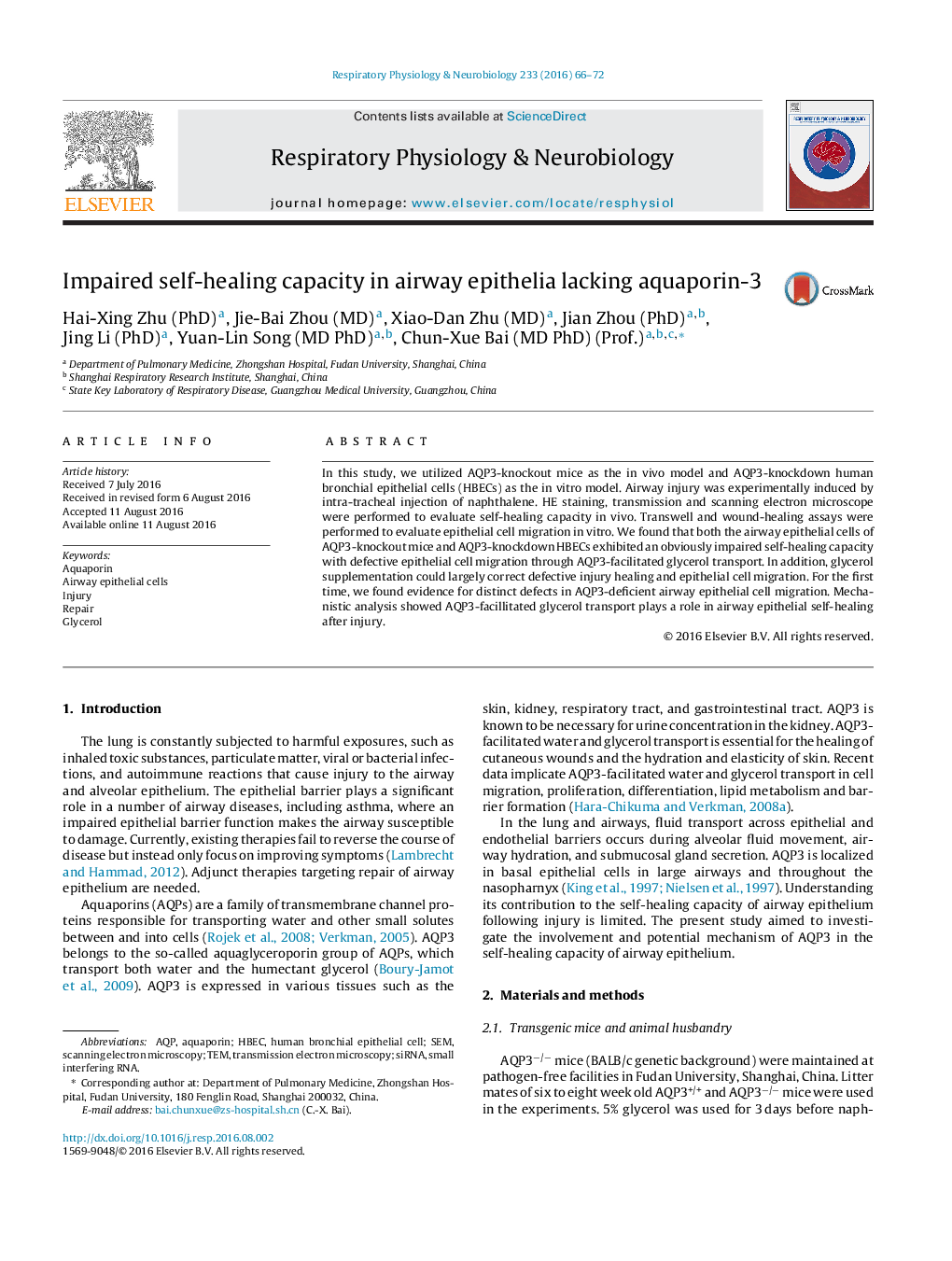| Article ID | Journal | Published Year | Pages | File Type |
|---|---|---|---|---|
| 2846626 | Respiratory Physiology & Neurobiology | 2016 | 7 Pages |
•Impaired in vivo airway epithelial repair in AQP3-/- mice.•Reduced cell migration in AQP3-konckdown epithelial cells.•Reduced glycerol and ATP contents in AQP3-/- airways.•Glycerol supplement corrects impaired injury repair and cell migration in airway epithelia.
In this study, we utilized AQP3-knockout mice as the in vivo model and AQP3-knockdown human bronchial epithelial cells (HBECs) as the in vitro model. Airway injury was experimentally induced by intra-tracheal injection of naphthalene. HE staining, transmission and scanning electron microscope were performed to evaluate self-healing capacity in vivo. Transwell and wound-healing assays were performed to evaluate epithelial cell migration in vitro. We found that both the airway epithelial cells of AQP3-knockout mice and AQP3-knockdown HBECs exhibited an obviously impaired self-healing capacity with defective epithelial cell migration through AQP3-facilitated glycerol transport. In addition, glycerol supplementation could largely correct defective injury healing and epithelial cell migration. For the first time, we found evidence for distinct defects in AQP3-deficient airway epithelial cell migration. Mechanistic analysis showed AQP3-facillitated glycerol transport plays a role in airway epithelial self-healing after injury.
